The land that became Jordan forms part of the richly historical Fertile Crescent region. Its history began around 2000 BC, when Semitic Amorites settled around the Jordan River in the area called Canaan. Subsequent invaders and settlers includedHittites, Egyptians, Israelites, Assyrians, Babylonians, Persians, Greeks, Romans, Arab Muslims, Seljuks, Christian Crusaders, Eyyubids, Mongols, Mameluks, Ottoman Turks, Circassians, and, finally, the British.
Jordan Kingdom was established by King Abdullah I after World War I. It is ruled by his grandson King Hussein for 46 years until his death in 1999, when his son, King Abdullah II assumed the throne. Jordan has developed into a modern nation that has enjoyed peace, stability and economic growth over the past decades.
The ancient Nabataean city of Petra, excavated in the rock more than 2,000 years ago, has long been the most famous image of Jordan. Although Petra is one of the most impressive attractions near East, Jordan offers many and interesting places for tourists today. As a well cemented bridge between the sea and the desert which connects the East with the West, the Kingdom Jordan Hashemite is a land of contrasts and captivating beauty.
From ever-changing and fertile valley Jordan until guns remote desert, immense and timeless, visitors can explore incredible castles in the desert; observe the imposing beauty of the desert of Wadi Rum or bath in the relaxing waters of the Red Sea.
For those who prefer adventure, have the alternative of walking horse, perform a safari through the desert in 4 x 4 vehicles, climb and descent of canyons such as also hiking.
And to relax completely, there is nothing better than enjoying the incomparable Dead Sea in its numerous hotels and spas.
Amman

Jordan capital Amman, a fascinating city full of contrasts, with a unique blend of ancient and modern, strategically located in an area of hills, between the desert and the fertile valley of the Jordan. The shopping centre of the city, you rub shoulders ultramodern buildings, hotels, restaurants, art galleries and boutiques with traditionals cafés and handicraft workshops.
Wherever there
are vestiges of the ancient past of the city. Due to the prosperity that enjoys
the city today and its mild climate, more than half of the population is
concentrated in the area of Amman.
The Centre is
much older and more traditional. You can find smaller businesses that produce
and sell almost everything, from complicated jewellery of gold and silver to
household of daily use. The city offers visitors a vibrant nightlife with
countless events, theatre, and from cultural to Arab performances, modern
restaurants and clubs. Jordan habitants are multicultural, very well educated
and hospitable, welcoming to all visitors and offer them proud his fascinating
and vibrant city. Only four hours drive from anywhere in the country, Amman is
also the perfect base to explore Jordan deep and diverse landscapes that
offers.
The Citadel is
an excellent starting point to visit the rest of archaeological sites of the
city. Former Rabbath-Ammon, his recent excavations have revealed here numerous
early Byzantine, Arab and Roman remains. Situated on a mountain, not only
provides visitors an incredible perspective of the city, but it also gives the
opportunity to admire stunning views of the area.
• The Umayyad
Palace is a complex dating from the year 720-750 A.D. The great monumental with
its cross-shaped gate and its four vaulted niches lead until a courtyard, a
street flanked by columns, which passes through the complex, in which can be
seen buildings in ruins on both sides.
• The Temple of Hercules,
built during the reign of Emperor Marcus Aurelius (161-180 A.D.).
As Salt
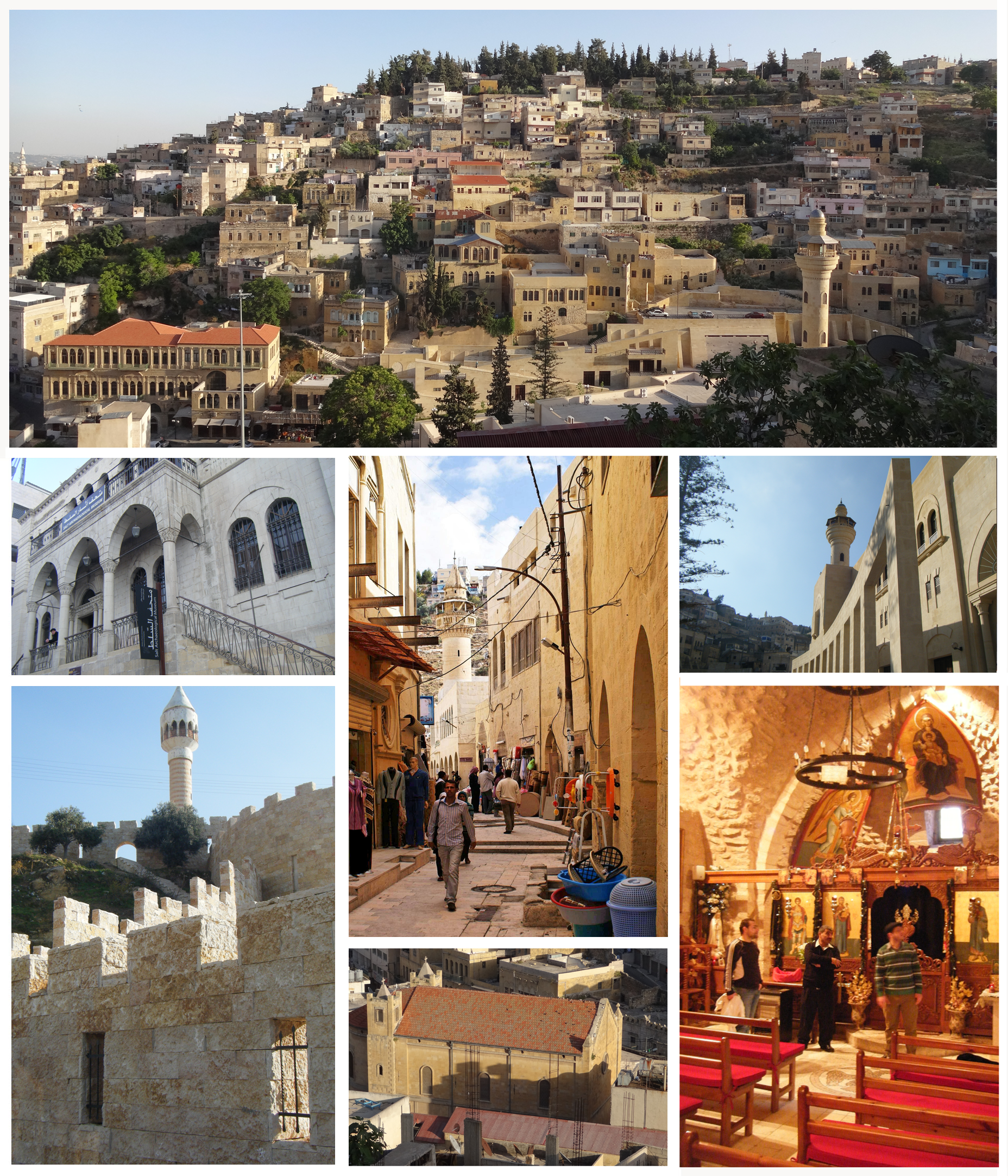
The ancient
town of as-Salt was once the most important settlement area between the Jordan
Valley and the eastern desert. Due to its history as an important commercial
link between the desert in the East and West, was a very meaningful place for
the rulers of the region.
The Romans, the Byzantines and Mamluks
contributed to the growth of the place, but it was at the end of the 19th and
early 20th Centuries, during the Ottoman rule, when as-Salt enjoyed its golden
age. At this time, the Ottomans established its administrative base in the
region in as-Salt and promoted from other parts of their empire settlements.
As increased
the importance of the city, many merchants came to her and, with its newly
acquired wealth, built beautiful houses that still today can be admired in
as-Salt. These splendid constructions made of yellow sand incorporate a variety
of local and European styles. Normally, had vaulted ceilings, Interior terrace
and high and arched Windows.
It may be the
most beautiful building of Abu Jaber, built between 1892 and 1906, with roofs
covered with frescoes painted by Italian artist mansion and considered the best
example of a merchant in the region of 19th century House. There is also a
small museum and a school of crafts that can be seen the manufacture of
traditional ceramics, tissues and printing and dyeing silk.
Madaba
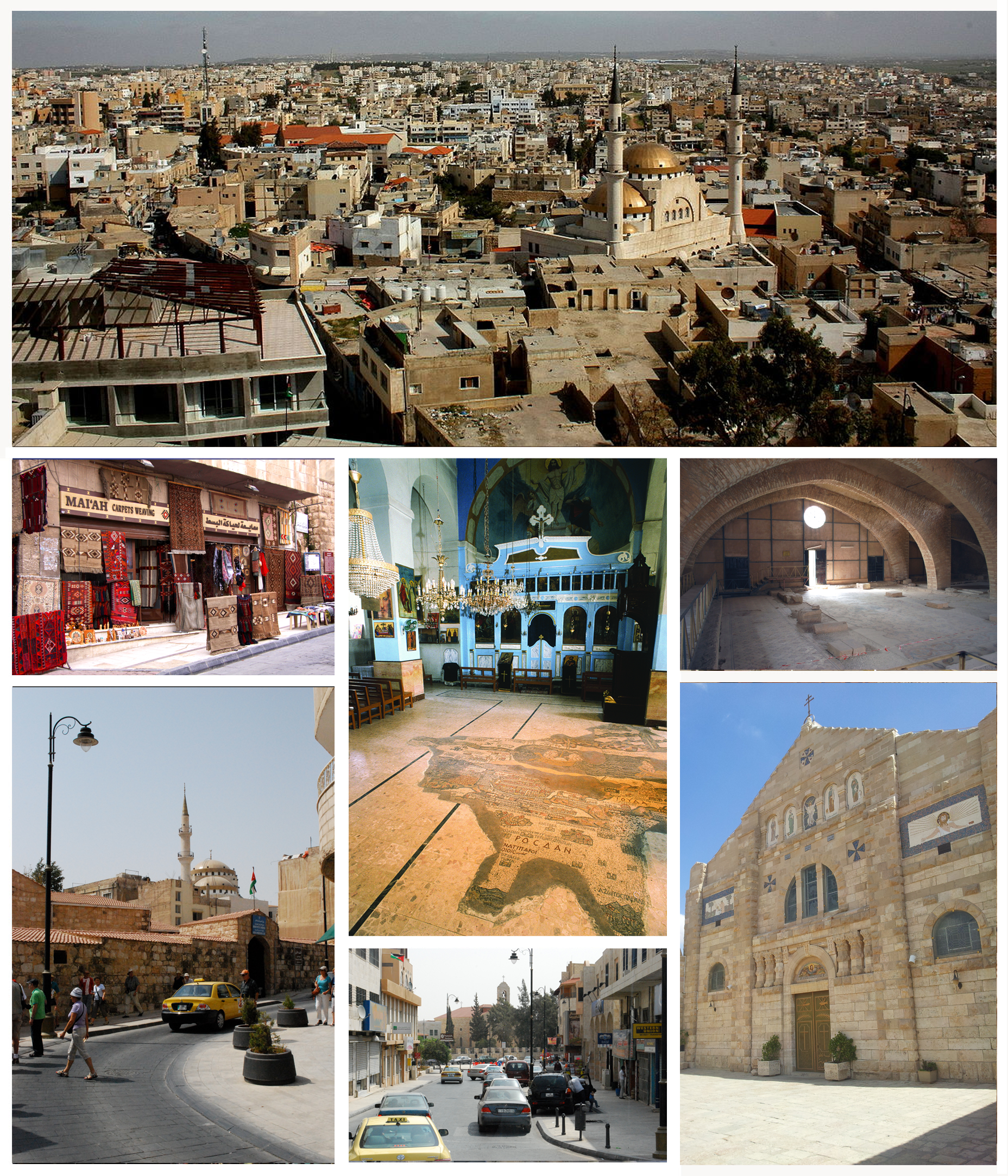
Madaba is one of the most
important sites of the Holy land. Also called the "city of mosaics",
Madaba offers plenty of places to explore. Among them, the main attraction is
the Greek Orthodox Church of St. George. In this church there is a map of
Byzantine mosaics of 6th century showing the city of Jerusalem and other sacred
places.
With two
million pieces of colored stones and a 25 x 5 meter extension originally, at
present, can be seen almost in its entirety. The map represents the hills,
valleys, villages and cities beyond the Nile delta. This piece is unique in
Jordan, but there are literally dozens of different mosaics belonging to the V
century VII, spread throughout all the churches and homes of Madaba. To
continue the line of Jordan commitment to the preservation and restoration of
its mosaics and unique pieces, the complex formed by the Archaeological Park
and Museum of Madaba has remains of some churches of Byzantine, including
exceptional mosaics from the Church of the Virgin and Hippolytus, part of the
6th century mansion room. Near the Archaeological Park we find the School of
Mosaic of Madaba, which operates under the auspices of the Ministry of tourism.
Being the only
project of its kind in the whole Middle East, the School forms artisans in the
art of creating, repair and restore the mosaics.
Monte Nebo
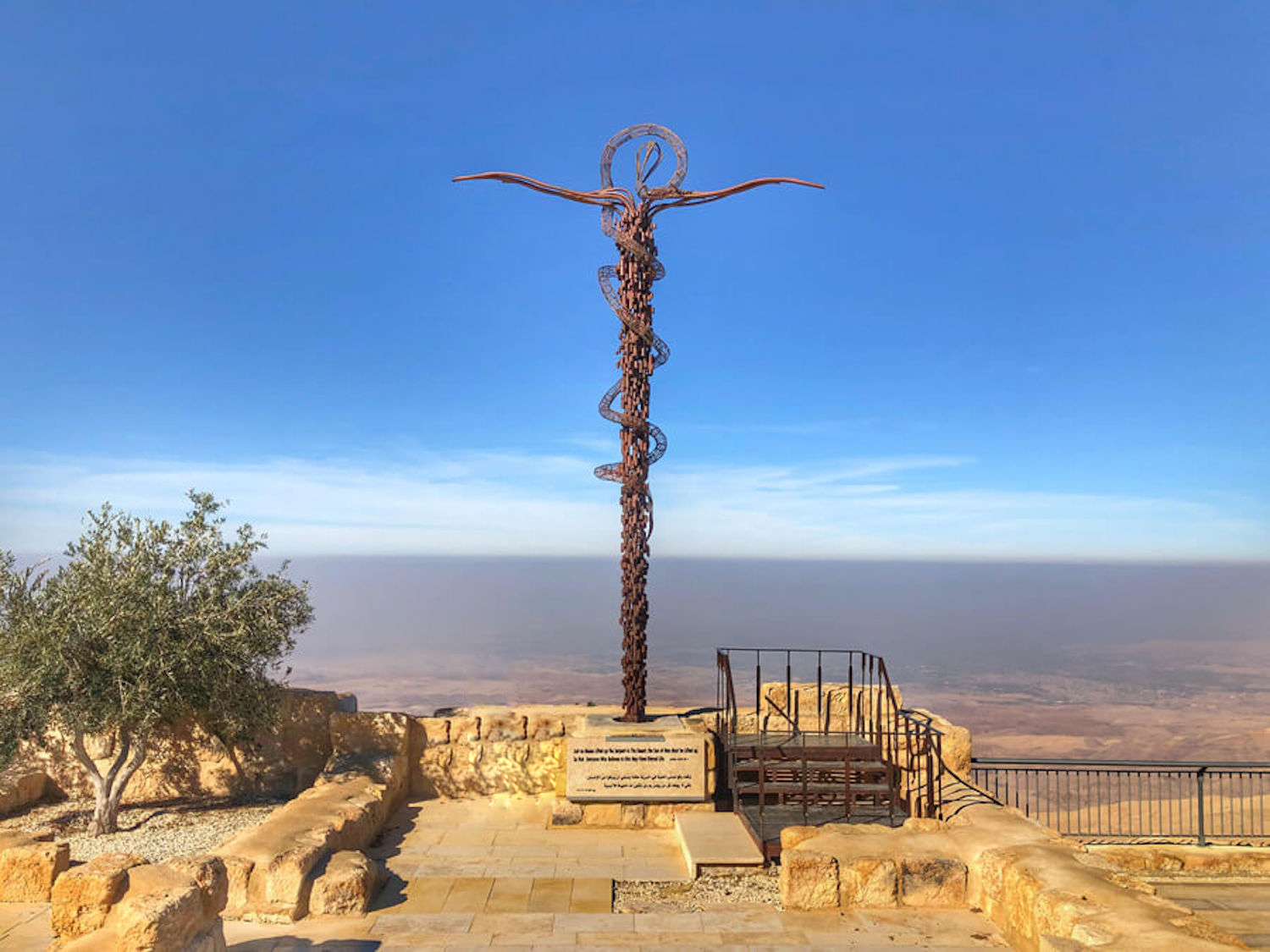
This is the place where
Moses is buried and the most revered
holy place in Jordan. Once on the top, one can contemplate, as did Moses, the
vast landscape composed of the Valley of the Jordan River, the dead sea,
Jericho and Jerusalem, which is referenced
frequently as the Holy land. Still quite a place of pilgrimage for
Christians; the first church on Mount Nebo was built at the end of the fourth
century to mark the place where Moses died.
Hammamat Ma'in (hot springs)
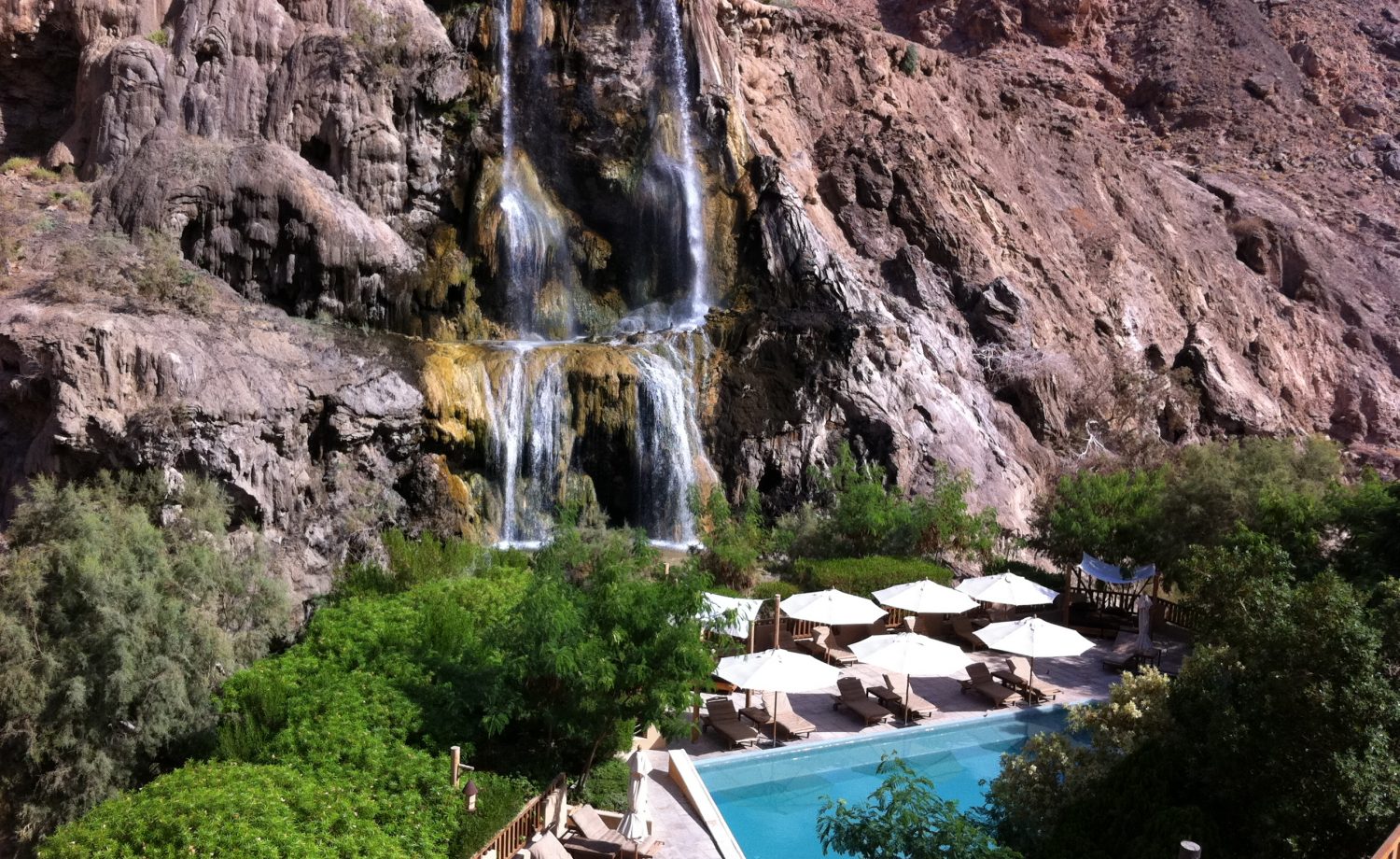
Since Roman times, people have attended births Hammamat Ma'in or Zarqa Ma'in mineral water in thermal treatments or simply to enjoy a bath of natural hot water. There is no better way to end a day full of historical visits that immersed in a bath of natural hot water. Located in this exceptional place, is a resort and spa offering a wide variety of services medicinal mud baths, baths and showers with water pressure, massage under water, and much more.
Jordan Valley
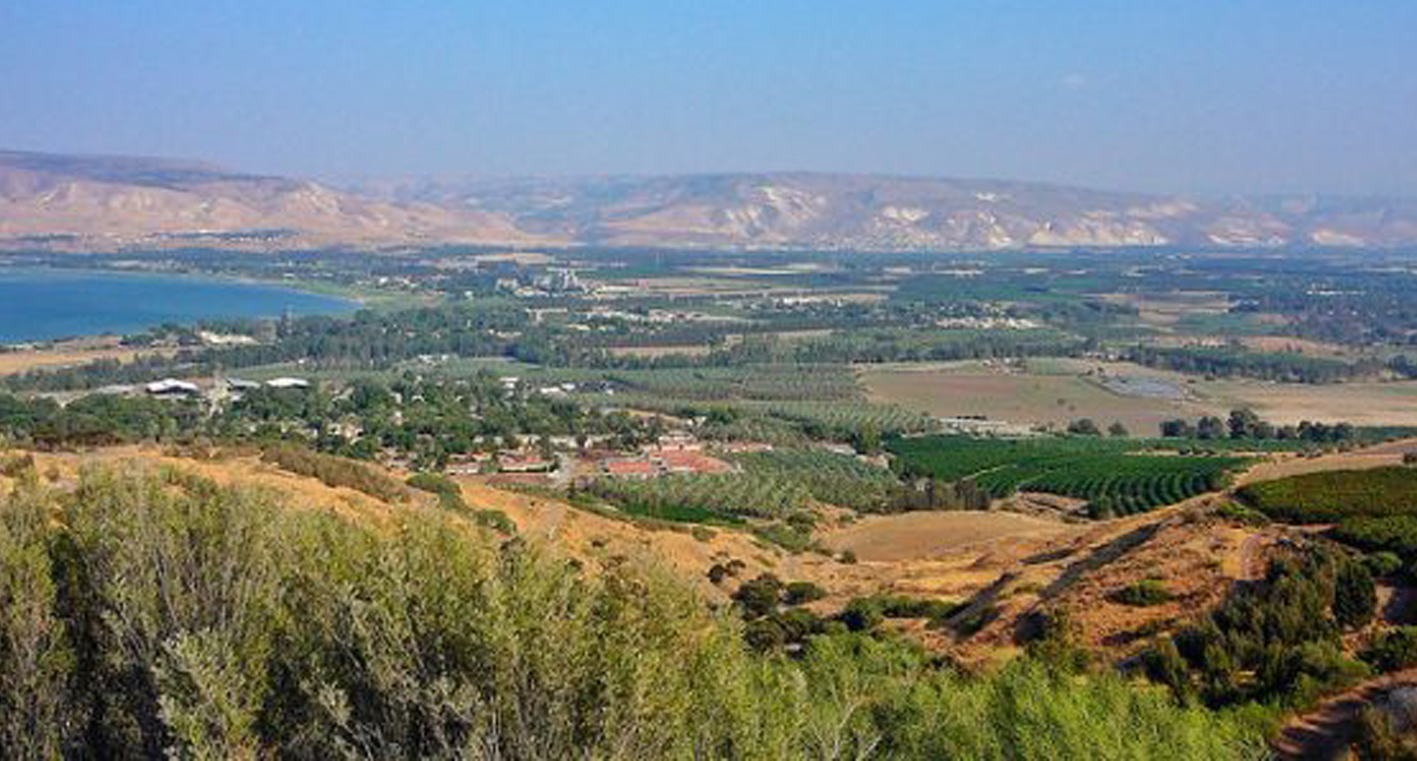
There is no
doubt is one of the most impressive places in the world, Jordan Valley is an
impressive and beautiful landscape. This being the lower point on the face of
the Earth, this wide expanse of water is the final destination of countless
rivers, among them the Jordan River.
A set of great
communication, excellent hotels with spas and fitness facilities as well as
archaeological discoveries make this region a tempting destination for
visitors, as well as a day it was for Kings, emperors, traders, prophets and
pilgrims in antiquity.
Bethany beyond of jordan
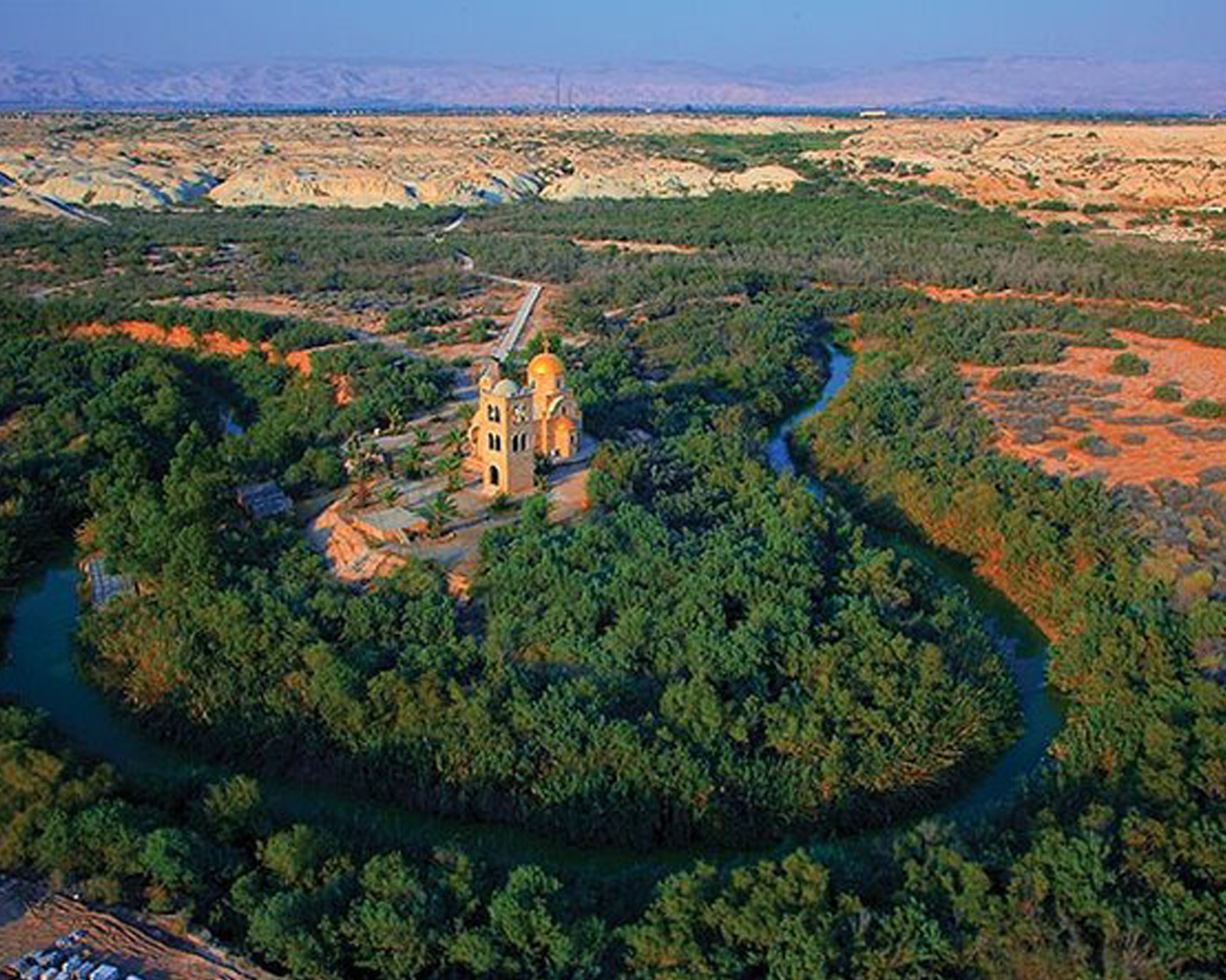
The Jordan Valley has
profound significance for religious tourists. Jericho area has been identified
for almost two millennia as the place where Jesus was baptized by John the
Baptist. Have been discovered impressive archaeological ruins between the
Jordan River and Tell - Kharrar since 1996, which has led to identify this area
as the biblical 'Bethany of Transjordan', where John lived when baptized Jesus.
Two thousand
years later, still attend this place people around the world to be baptized.
Pope John Paul II also visited this place as part of his spiritual pilgrimage
to the Holy Land, at the beginning of the new millennium. Tell Al - Kharrar
(Hill of St. Elias) reminds us the Prophet Elijah. Reportedly came to the sky
from this Hill in a chariot of fire.
The Hill of St. Elias is
currently the focal point of the "place of baptism" and is covered by
the remains of a Byzantine monastery churches and large baptismal pool with a
water storage system. The discoveries of early in the 1st century AD have
revealed that this place was inhabited in the life of Jesus and John the
Baptist. A building of the 3rd century whose pavement is a white mosaic is
thought that early Christians could be a place of worship may be one of the
first places of Christian’s worldwide prayer.
Elias Hill has also
identified the cave in which, according to several texts of pilgrims, lived
John the Baptist baptized Jesus Christ. In recent years has discovered a
Byzantine church built around the cave and a channel of water by man coming out
of the cave. Both findings can visit today. Near the Jordan River are other
four Byzantine churches and large swimming pools with an extensive system of water
pipes. These facilities are mentioned in texts drawn up by Byzantine writers
listed with the tradition of the baptism of Jesus.
The Dead sea
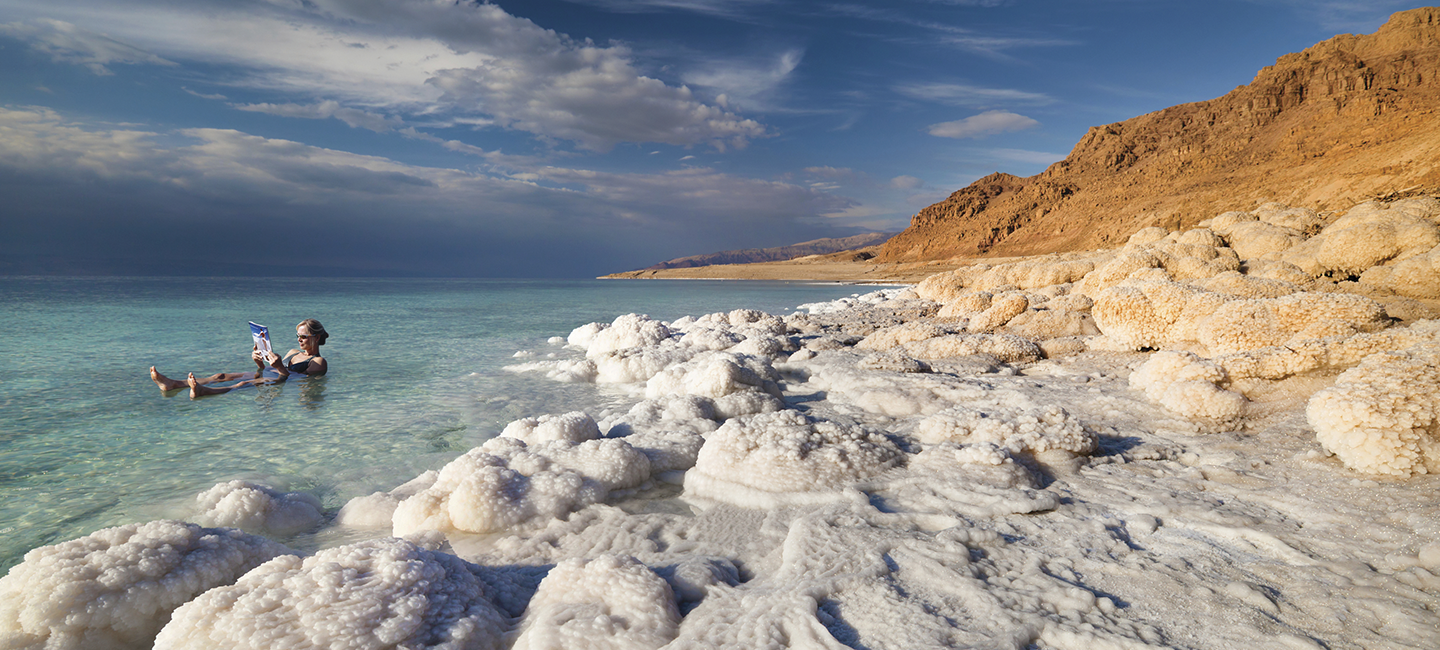
The dead sea has its own
historical and spiritual heritage. Is believed to be the place of five biblical
cities: Sodom, Gomorrah, Adama Seboim and Segor (Bela). Today, its East Coast
is little populated and is quiet. With most of its landscape almost identical
to ancient times, this is an ideal point for a tour of fun. You can spend the
day sunbathing, bathing and tasting food. Relax in the mild waters and
surprise, because it will never sink.
Choose from a
relaxing massage or try known powers of minerals from the mud from the bottom
of the sea. If you want a quieter stay, you can spend the night in a
comfortable hotel overlooking the sea, towards the West Bank. This West view
provides visitors a unique perspective of the Dead Sea, with a breath taking
sunsets.
Pella
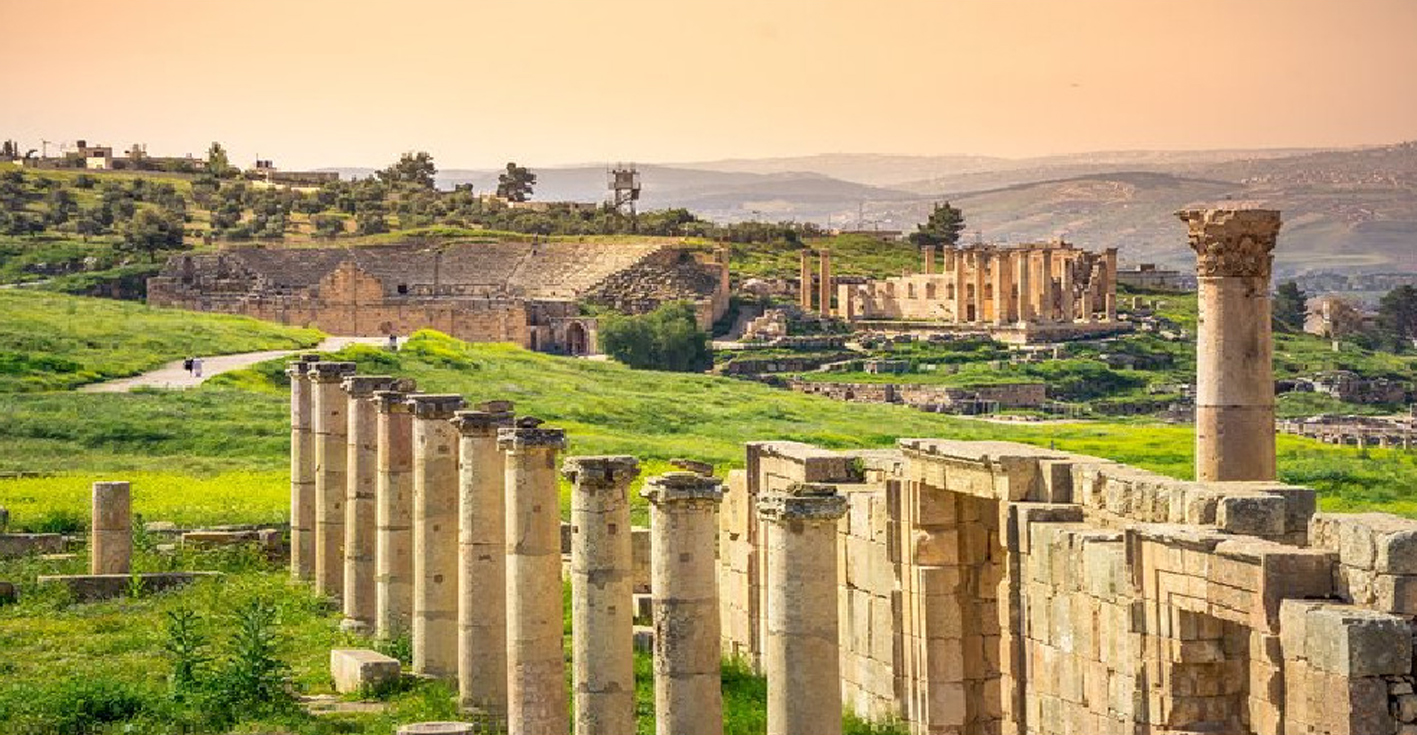
Pella is
favorite of archaeologists, city because it has an enormous amount of antiques.
In addition the excavated ruins of the Greco-Roman, period including an Odeon
(Theatre), Pella offers visitors the opportunity to admire the remains of a
settlement dating back four thousand years BC, CHALCOLITHIC vestiges of the
walled cities of ages of bronze and iron, churches and Byzantine houses, an
Islamic residential area and a small medieval mosque.
Ajlun
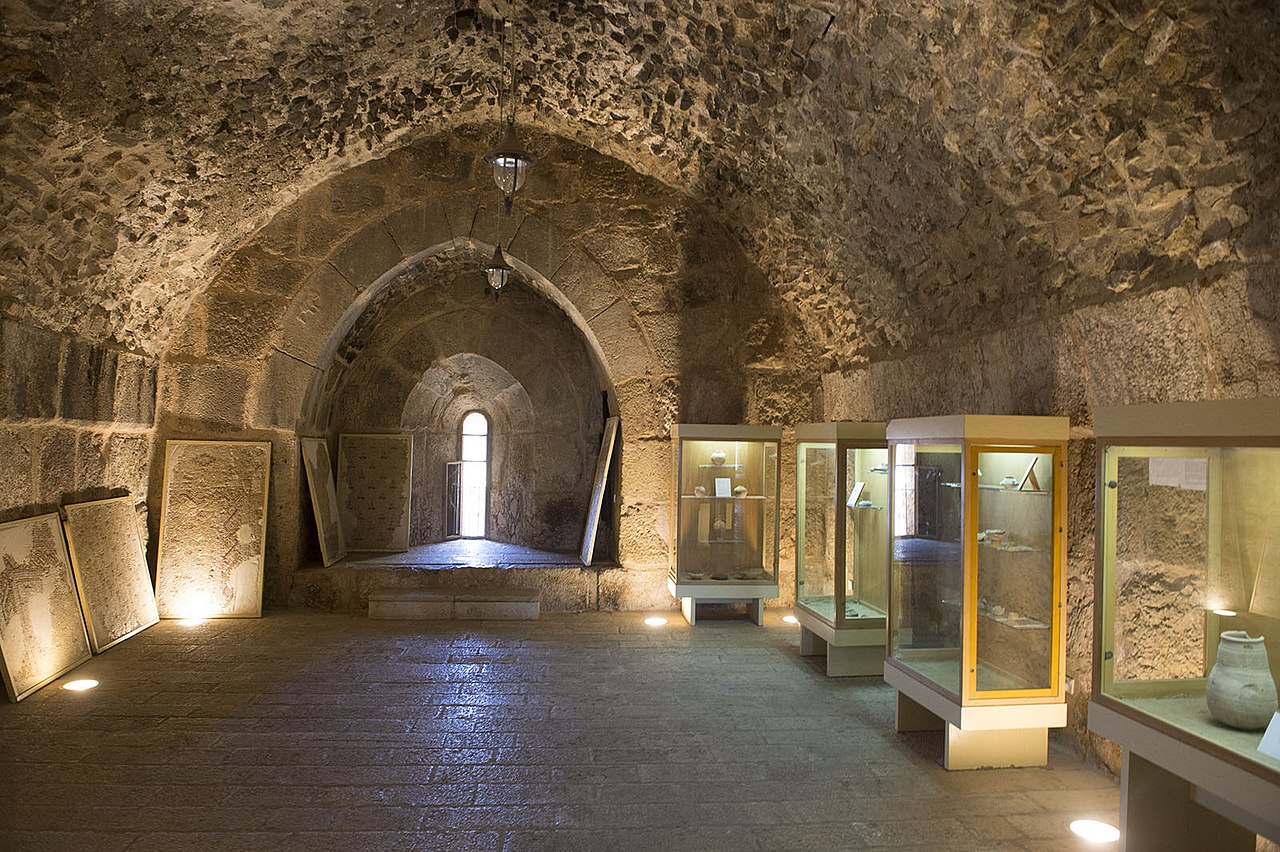
The wonders of nature and the genius of
Arab military architecture have been awarded to Jordan North, two of the most
important ecological and historical attractions in the Middle: the incredible
growth of Ajlun-Dibeen area and Ayyubid Ajlun, helped to defeat the Crusaders
Castle Pines forests for eight centuries.
Umm qais
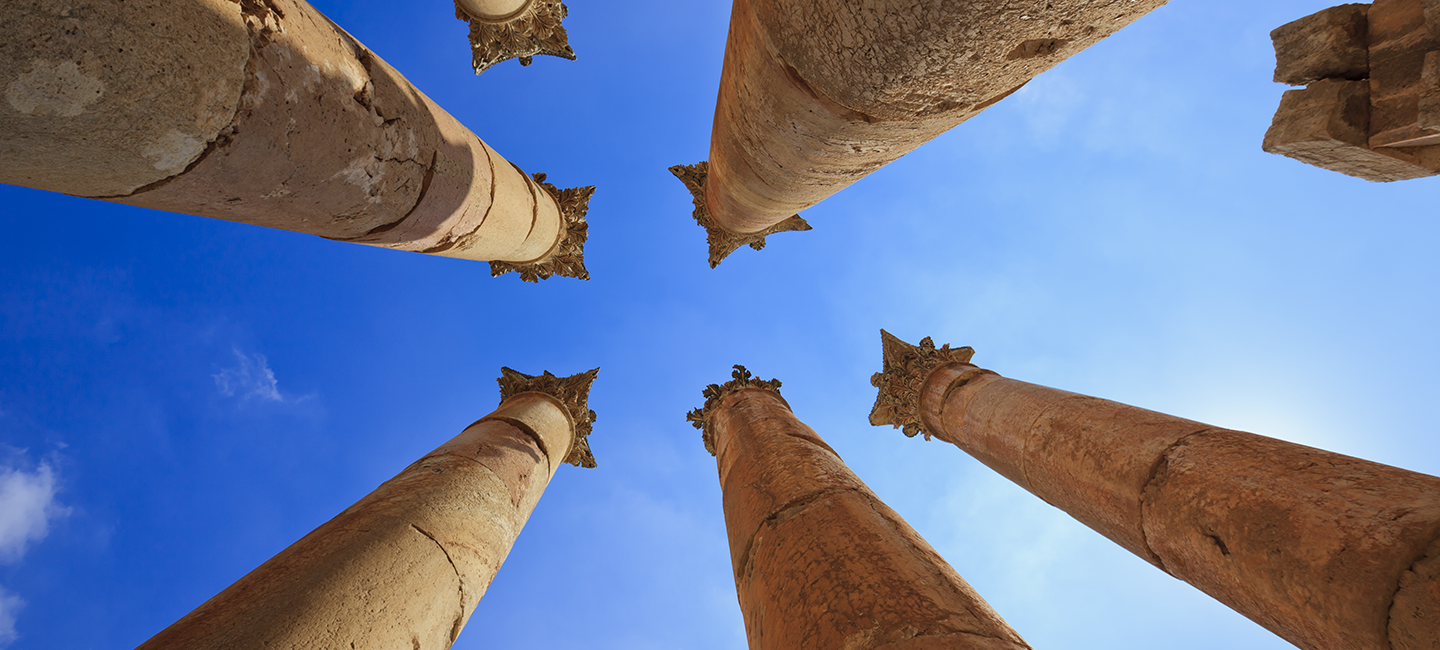
Place in which Jesus did
the miracle of Gadara (current Umm Qais) pigs it was considered an important
cultural centre in his time. It was home to many poets and philosophers
classics as Theodore, founder of the rhetorical School of Rome. A poet
described the city as the "new Athens". Situated at the Summit of a
hill overlooking the Valley of the Jordan and the Sea of Galilee, Umm Qais
possesses an impressive terrace with columns and the ruins of two theatres.
Visit places of interest and then dine at the magnificent terrace some
restaurant, where you can enjoy the incredible views from three countries.
Karak
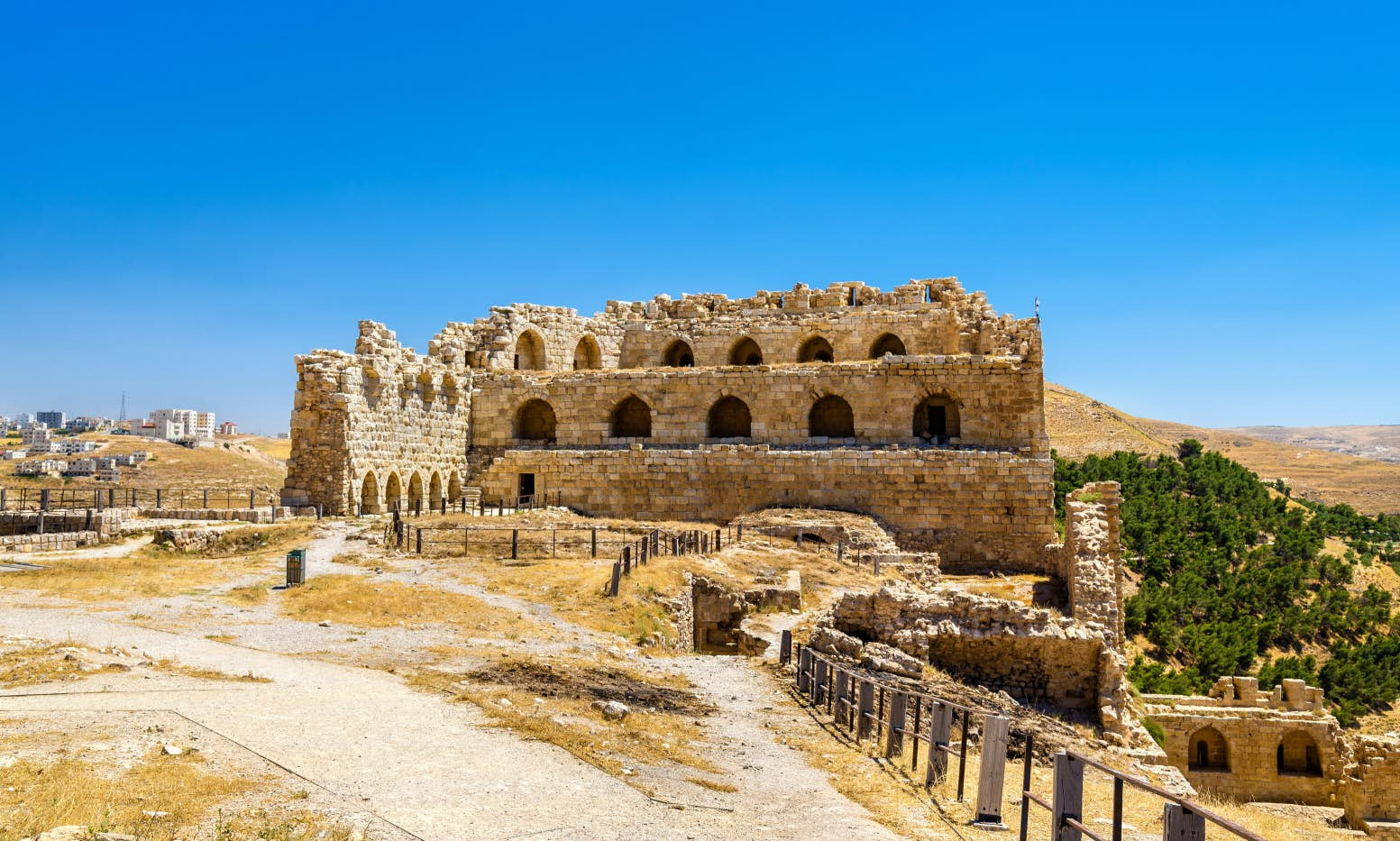
Ancient fortress of the
Crusades, Karak is situated 900 meters above sea level and sits inside of the
old city walls. Currently, the city continues even taking a large number of
Ottoman buildings of the 19th century, restaurants, accommodation, etc. But,
undoubtedly, Karak Castle is the most important attraction.
The most famous ruler of
Karak was Raynald de Châtillon, whose reputation for treason, abuse of
confidence and brutality was not equal. When Baldwin died, his son, a
13-year-old leper struggled to achieve peace with Saladin. The leper King died
childless and was succeeded by Reinaldo, who got married Stephanie, the wealthy
widow of Regent Karak, who had been killed. Quickly broke the truce with
Saladin, who returned to fight him, with a huge army. Reinaldo and Guido King
of Jerusalem led the forces of the Crusades and suffered a major defeat. The
first expansion of Islam by the Arabian Gulf was conducted towards the North of
Jordan Here there was the first
contact between Islam and the world that was not Arabic and Byzantine. As a
result, there were several strategic battles that took place in the 7th
century: the battle of Yarmouk, Muta, Fahl (Pella). Many of the companions and
military leaders of the Prophet Mohammed were martyred and buried at Jordan, so
their graves and sanctuaries are now important destinations for Muslims.
The city of Karak is built
on a triangular plateau and the castle is situated in the most southerly
located tip. Dark and rough construction of the Crusaders fine limestone blocks
used in the later Arabic architecture can be distinguished by the Castle.
Desert castles
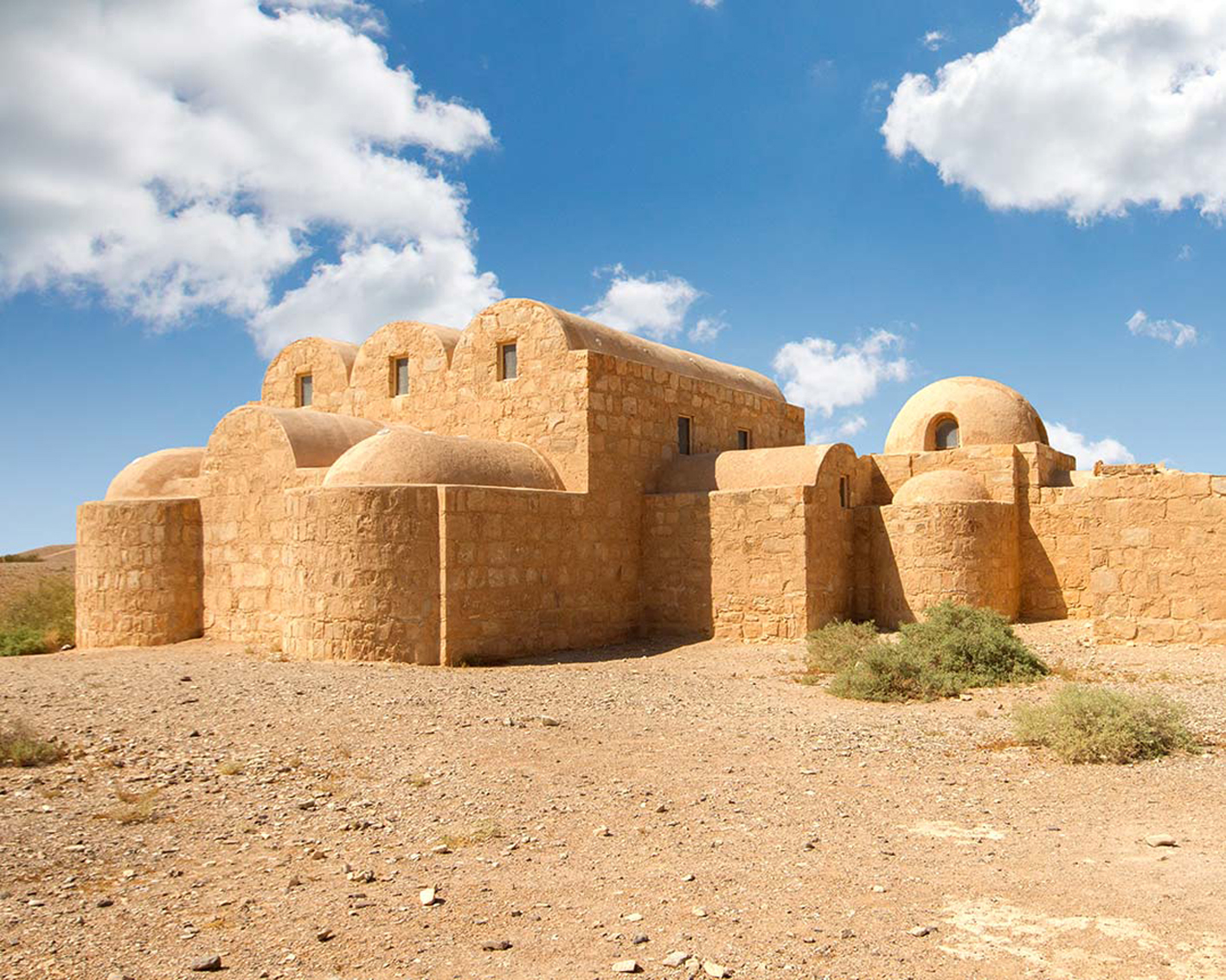
Jordan desert castles are
an excellent example of early Islamic art and architecture and are the legacy
of one was fascinating in the entire history of this country. Its fine mosaics,
stones, excavations and stucco, illustrations inspired by Persian and
Greco-Roman tradition told countless stories of what life was like during the
8th century.
Called castles by its
imposing height, complexes located in desert actually served for several
purposes: as stations for caravans, agriculture and trade centers, rest
pavilions and advanced military that helped the foreign rulers strengthen ties
with Bedouin area.
Many of these remains are
conserved complexes that are grouped to the East and South of Amman. Qusayr '
Amra, one of the best preserved monuments has been declared world heritage by
UNESCO. Interior ceilings and walls are covered by unique frescoes and two
rooms have the ground covered by colorful mosaics. Qasr Mushatta, Qasr al -
Kharrana, Qasr at - tuba and Qasr al - Hallabat have been restored and
therefore are in excellent condition.
The Fort of black basalt in
Azraq, used continuously from late Roman era,
was headquarters of Lawrence of Arabia during the Arab Revolution.
Petra
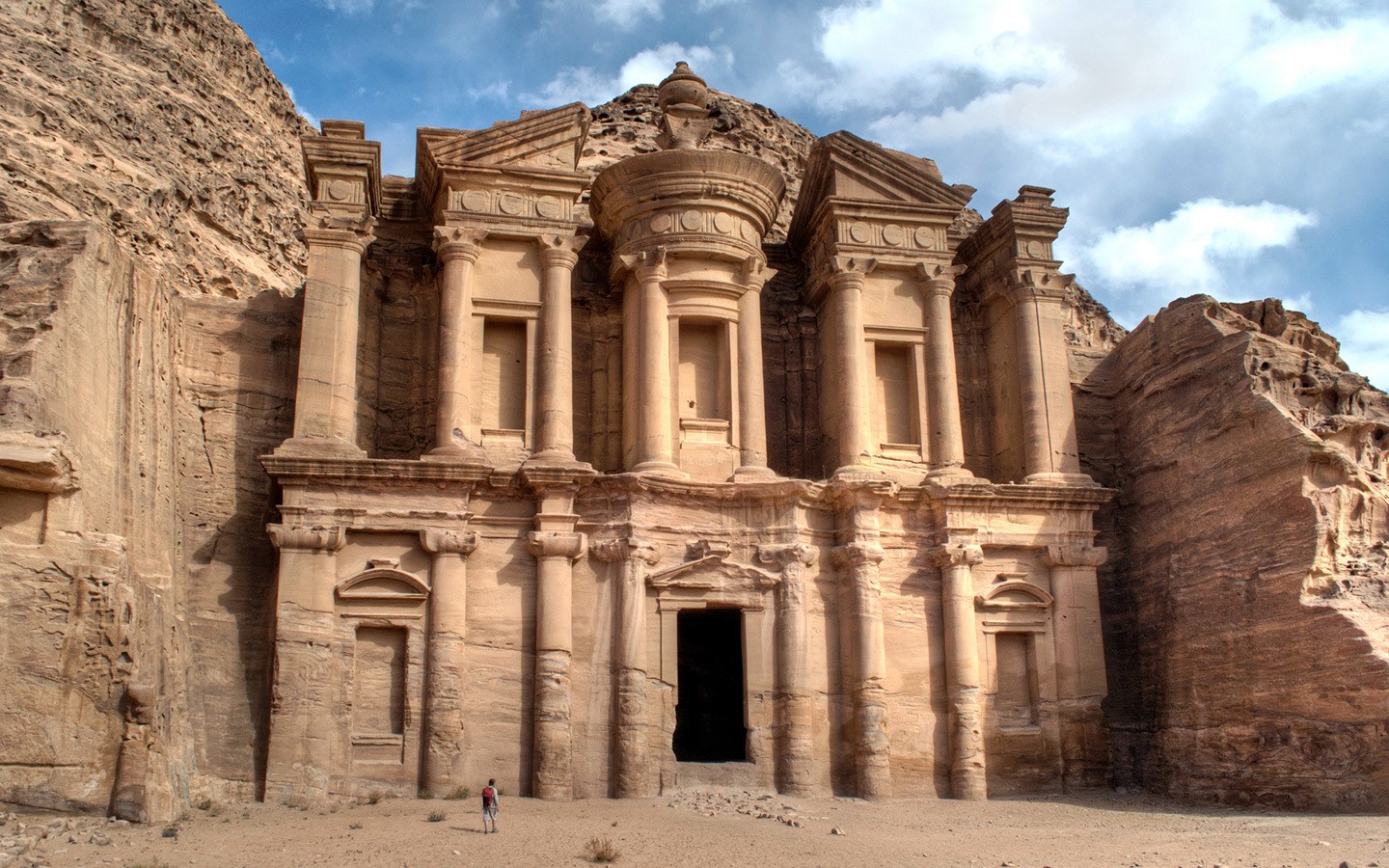
The seventh wonder of the world
It was often known as the eighth
wonder of the ancient world. On July 7th, 2007 Petra was officially
named by UNESCO among the seven wonders of the modern world, Petra is, without
doubt, the most precious treasure of Jordan and the most important tourist
attraction.
The capital of
the ancient Nabatean Empire is about 250 kilometers south of the Amman and was
recognized world heritage site in 1985. It’s considered the most important
archaeological site of Jordan. Situated at the edge of the Arabian Desert,
Petra is resplendent in view of the thousands of tourists that every year
travel to Jordan only for spends a few hours there.
Is a huge city excavated
completely out of the rocks by the Nabateans, hardworking Arab tribe that
settled in the area more than 2,000 years ago and became an important city pass
routes silk, spices and others linked to China, India and Southeast Arabia with
Egypt, Syria, Greece and Rome. The Nabataean Kingdom lasted for centuries and
Petra became a greatly admired city by its refined culture, massive
architecture and complex and witty dikes and water channels. However, finally,
the Roman Emperor Trajan annexed the Kingdom. In the 14th century, Petra was
completely unknown to the Western world and remained for nearly 300 years.
Until it in 1812, a Swiss Explorer Johann Ludwig Burckhardt convinced his guide
to take him to the place which said that he was the lost city. Making notes and
sketches in secret, wrote that "could be the ruins of Wadi Musa were those
of the ancient Petra". To maintain Petra, all tourist facilities have
located in the town of Wadi Musa, just at the entrance to Petra.
The main attraction of
Petra is, logically, the city itself. A day of visit is the minimum to admire
it, because even in a week, still leave many of their places unexplored. You
can buy maps and excellent guides at the entrance to Petra and also retain the
services of a guide that can accompany you through the old city. You can also
rent a horse or a car of horses, which will take you from the main entrance through
the Siq and until the Treasury. Visitor disabled or older age, the visitor
center provides a special permit granted paying an additional fee, allowing
horse’s cars venture into Petra and visit major attractions. When passed the
Siq, and once inside the Royal City, rent a donkey, or for the more
adventurous, left to carry for camels: is easier than it sounds and is
surprisingly comfortable. Remember to be careful, since the city of Petra is
extensive and has some areas with very steep slopes. The most famous monument
of Petra is the Treasury or al - Khazneh, which appears impressive at the end
of the siq. Used in the final sequence of the film "Indiana Jones and the
last crusade", very high facade Treasury is only the first of the secrets
you will discover in Petra.
Wadi rum
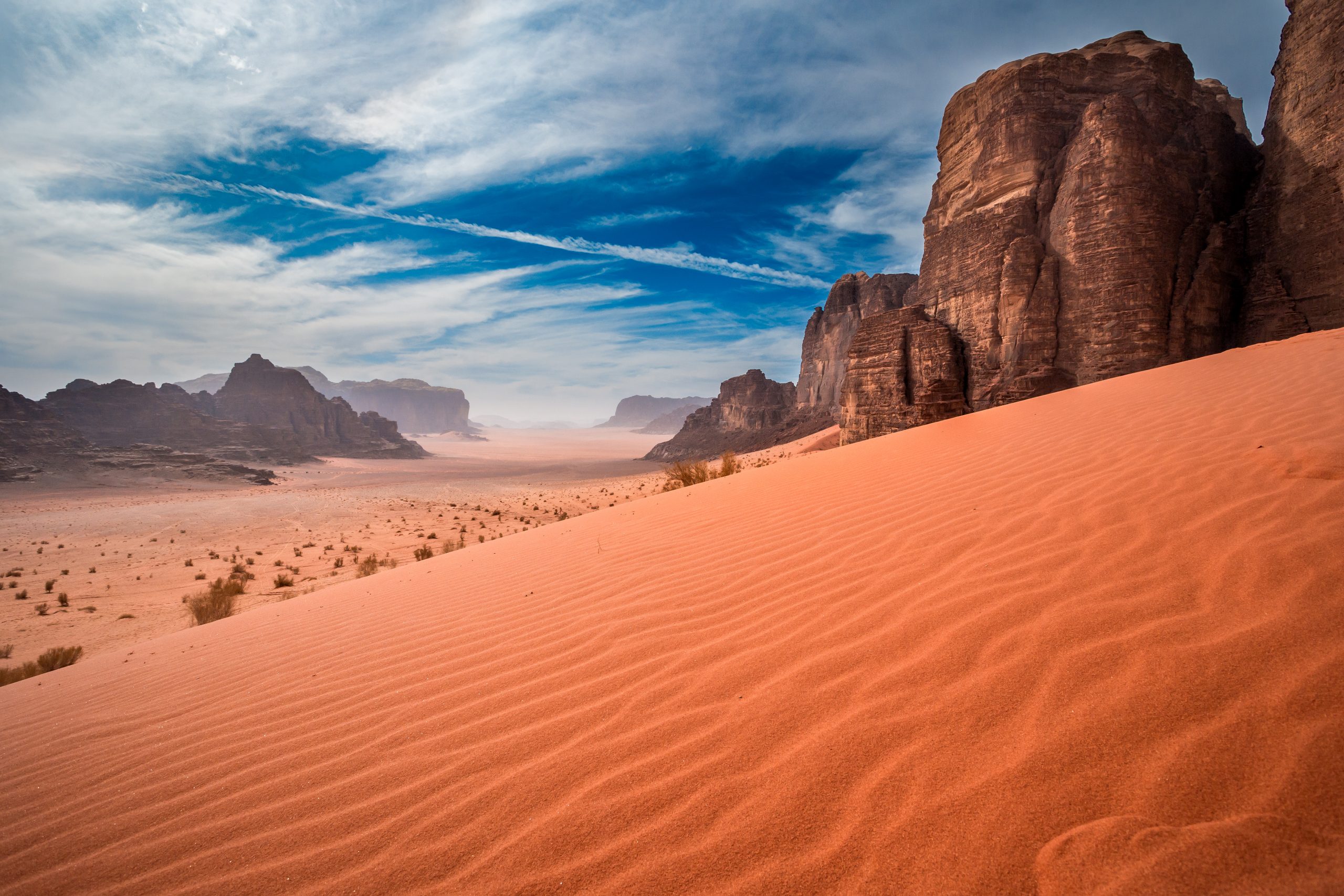
"Huge,
solitary... as played by the hand of God". These are the words that T. E.
Lawrence was used to describe Wadi Rum. It is the most extensive and
magnificent landscape of Jordan.
A great place, in which it seems that time has
stopped, it is almost intact. A maze of monolithic rock landscapes stands from
the desert ground to 1,750 meters in height, creating a natural challenge for
experienced climbers. Walkers can enjoy the tranquility of the empty spaces and
without limits, explore canyons and water tanks and discover the drawings of
the stones dating back 4,000 years ago, addition of other spectacular treasures
that owns this impressive desert. Also known as the 'Valley of the Moon', this
is the place where Prince Faisal Bin Hussein and T.E. Lawrence established his
headquarters during the Arab revolution against the Ottomans in World War I;
his exploits are intimately linked to the history of this impressive place.
Aqaba
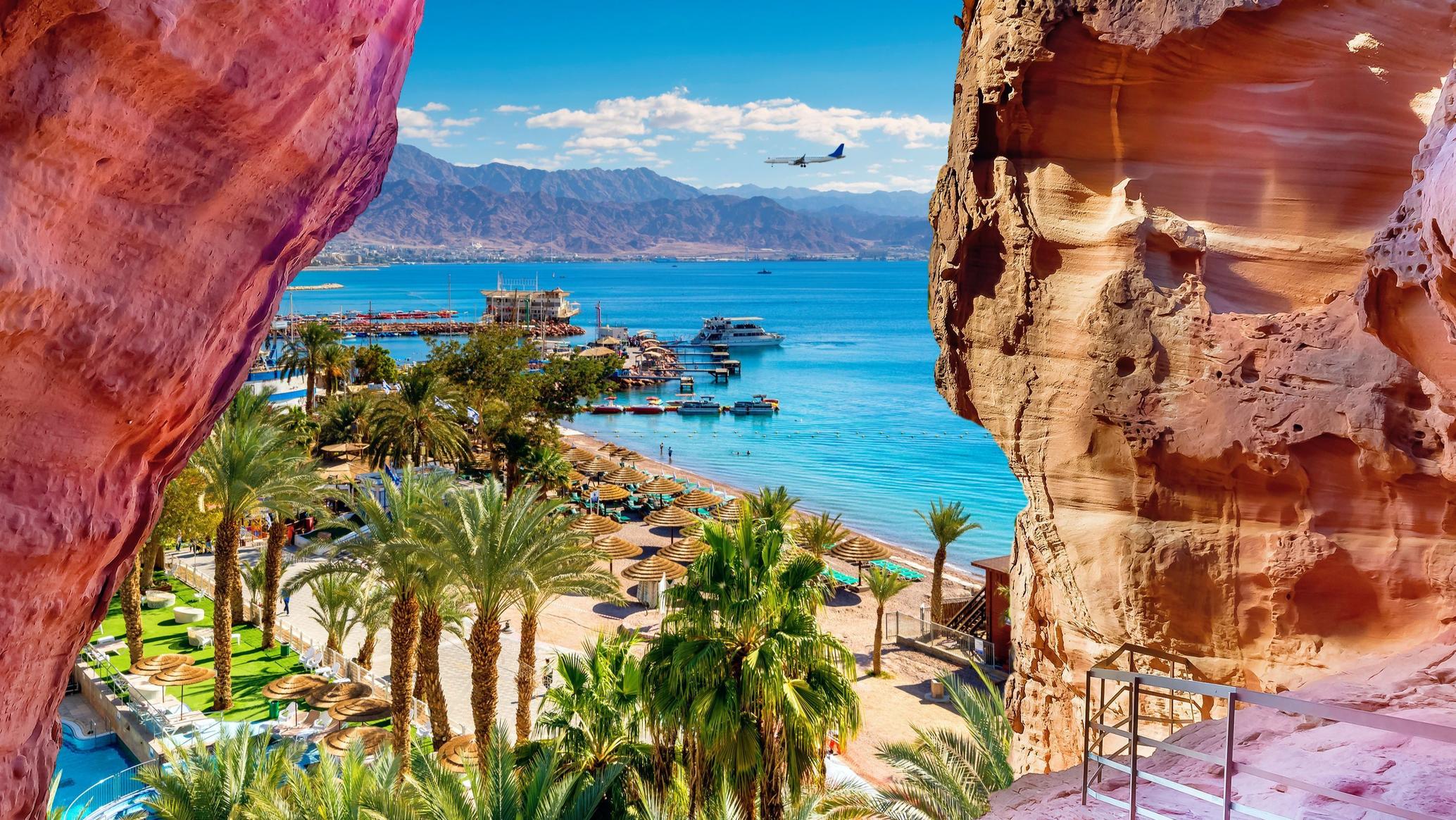
Aqaba is located in Jordan
South and northeast of the Red Sea, being its landlocked port. There is an
adequate hotel infrastructure and qualified dive operators. Between
22 and 28 degrees warm and crystalline waters of the Red Sea and particularly
Aqaba, enable a peaceful, colorful and great variety of fish and corals diving.
You can dive from the shore, allowing also enjoy the beach and perform other
aquatic sports.
A refreshing view that
contrasts with colored pink North desert. The sandy beaches and coral reefs are
in perfect condition in the Red Sea and Jordanians working relentlessly to keep
it. In the deep waters Indian color off the coast of Aqaba likes a kaleidoscopic
Sea life which can be easily admired. Explore the area is synonymous with walk
in a private place and take a bath in the reef. Unusual vertical currents and
sea breezes make scuba diving a refreshing and pleasant, experience even during
the hot summer. The reef of Aqaba is splendid and is adorned with a huge
variety of corals and fish. The coral branch, fungi coral and montipora,
moreover from the "archelia", a rare black color only found at great
depths, and which was first discovered by King Hussein himself.
Explore the reef you will
find countless species of fish: clown fish, fish crossbow Picasso, gobio,
anemones, fish parrot fish bagpipes and many more. Two of the most interesting
species are eels, almost invisible in the deep sea flora and harmless shark’s
whale, which feed on plankton and are the world's largest marine species. Apart
from the diving high quality which can be practiced in the area, hotels and
other companies of the beach services can organize other water sports. Diving,
fishing and surfing to spend time or a walk in glass bottom boat for those who
prefer to admire life marine to distance.
Here is a strong Mamluk at
the end of the cornice, and an island situated in the middle of the Gulf, is
Saladin Castle, enemy of Richard the Lionheart and Reinaldo de Châtillon. In
this century, T. e. Lawrence and Arab forces fought against the Ottomans in one
of the most impressive victories of the Arab revolution. Aqaba enjoys a warm
temperature nine months a year, during the winter, spring and autumn. Summer is
very hot, but may decrease their activities and adapt to climate lessening the
pace during the day and accelerating when cool, at night.
